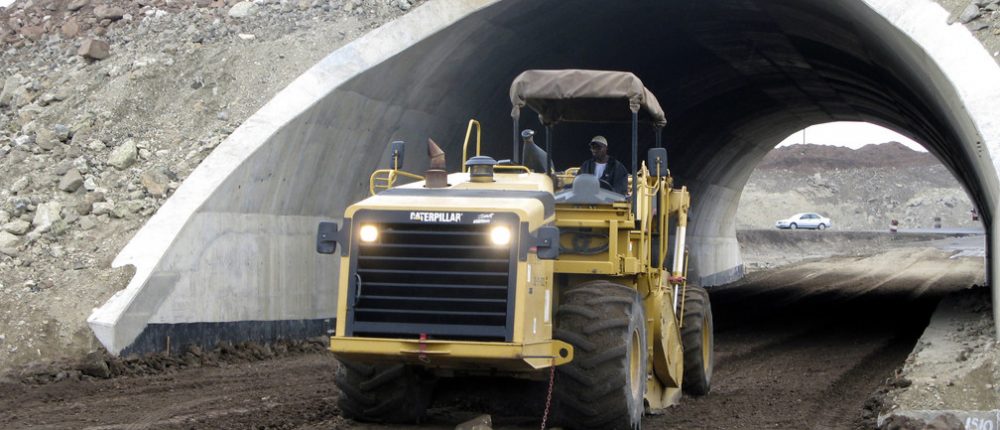These giant infrastructure projects are set to reshape Africa
Contents |
[edit] Introduction
Africa’s population is exploding. By the United Nations’ estimate, the continent will see its current population of 1.2 billion double by the year 2050. That’s an expected growth of 42 million people — basically a brand-new Argentina — every year.
A number of important infrastructure projects are underway to make room for all those people, including railways, dams, and clean energy solutions such as solar arrays.
Here are some of the largest projects coming to Africa in the next several decades.
[edit] North South Corridor
In 2009, the Common Market for Eastern and Southern Africa began work on the North South Corridor — a series of roadways and railways spanning more than 6,000 miles across seven countries. Its total cost is approximately $1 billion.
Image: Ernst & Young
[edit] Bagamoyo Port
Tanzania’s Bagamoyo Port will become Africa’s largest port, capable of handling 20 million containers a year. With an estimated cost of $11 billion, a Chinese government construction firm expects to complete the port by 2045.
Image: Reuters
[edit] Modderfontein New City
In 2013, Chinese development firm Zendai Property Limited announced it was building an $8 billion city outside Johannesburg, called Modderfontein New City. It will become a hub for Chinese firms investing in African infrastructure.
Image: Shanghai Zendai
[edit] Konza Technology City
Not to be outdone, Kenya is getting Konza Technology City, a $14.5-billion software hub outside Nairobi. The government is calling it “where African silicon savannah begins.”
[edit] Bouregreg Valley
In 2013, Morocco launched a $420-million urban development project in the Bouregreg Valley. Building up the area will link Rabat and Salé, two of Morocco’s most vibrant towns currently split by the valley.
Image: Jean Nouvel
[edit] Lagos-Calabar coastal railway
China and Nigeria have agreed to a $11-billion contract to build the Lagos-Calabar coastal railway. It will stretch for 871 miles and is expected to open in 2018.
Image: CCECC
[edit] Grand Ethiopian Renaissance Dam
At a cost of $4.8 billion, the Grand Ethiopian Renaissance Dam will provide hydroelectric power to Ethiopia and nearby countries. There is some criticism, however, that the dam forces the relocation of nearly 20,000 people.
Image: Ethiopian Herald
[edit] Grand Inga Dam
At an average output of 39,000 MW per year, the Grand Inga Dam will become the largest energy-generating body in the world. Its total development cost is an estimated $100 billion. Developers expect to finish the project by 2025.
Image: Bloomberg
[edit] Jasper solar farm
Opened in South Africa in 2014, the Jasper solar farm produces roughly 180,000 megawatt-hours per year, capable of powering 80,000 homes. It is the largest solar power project on the continent.
Image: SR
[edit] New Suez Canal
Construction began on an extension to the existing Suez Canal in 2014. The “New Suez Canal” adds 22 miles in a new shipping lane beside the original 102-mile canal and is expected to double annual revenue with the room for added ships.
Image: Wikimedia Commons
[edit] Dangote Cement
Dangote Cement, Africa’s largest cement producer, signed contracts worth $4.3 billion in 2015 with a Chinese engineering firm to increase its capacity to 100 million tons across 15 countries by 2020. The deal will enable the construction of many other projects around the continent.
Image: GE Africa/YouTube
Written by
Chris Weller, Ideas Reporter, Business Insider
This article is published in collaboration with Business Insider.
The views expressed in this article are those of the author alone and not the World Economic Forum.
This article was originally published on the Future of Construction Knowledge Sharing Platform and the WEF Agenda Blog.
[edit] Find out more
[edit] Related articles on Designing Buildings Wiki
- A better investment framework for Africa.
- China’s clean, green buildings of the future.
- Construction in Malaysia.
- Global Construction 2025.
- How Latin America and the Caribbean can unlock their digital potential.
- How to tell which infrastructure projects will work.
- India needs to build more infrastructure fast. Here’s how.
- Megaprojects.
- Renovate, operate, transfer (ROT).
- Scoping project approach in the developing world.
- State of the construction industry in Uganda.
- Tallest buildings in the world.
- Top 10 skyscrapers located in the UAE.
--Future of Construction 14:14, 20 Jun 2017 (BST)
Featured articles and news
Homes England creates largest housing-led site in the North
Successful, 34 hectare land acquisition with the residential allocation now completed.
Scottish apprenticeship training proposals
General support although better accountability and transparency is sought.
The history of building regulations
A story of belated action in response to crisis.
Moisture, fire safety and emerging trends in living walls
How wet is your wall?
Current policy explained and newly published consultation by the UK and Welsh Governments.
British architecture 1919–39. Book review.
Conservation of listed prefabs in Moseley.
Energy industry calls for urgent reform.
Heritage staff wellbeing at work survey.
A five minute introduction.
50th Golden anniversary ECA Edmundson apprentice award
Showcasing the very best electrotechnical and engineering services for half a century.
Welsh government consults on HRBs and reg changes
Seeking feedback on a new regulatory regime and a broad range of issues.
CIOB Client Guide (2nd edition) March 2025
Free download covering statutory dutyholder roles under the Building Safety Act and much more.
Minister quizzed, as responsibility transfers to MHCLG and BSR publishes new building control guidance.
UK environmental regulations reform 2025
Amid wider new approaches to ensure regulators and regulation support growth.
BSRIA Statutory Compliance Inspection Checklist
BG80/2025 now significantly updated to include requirements related to important changes in legislation.



































